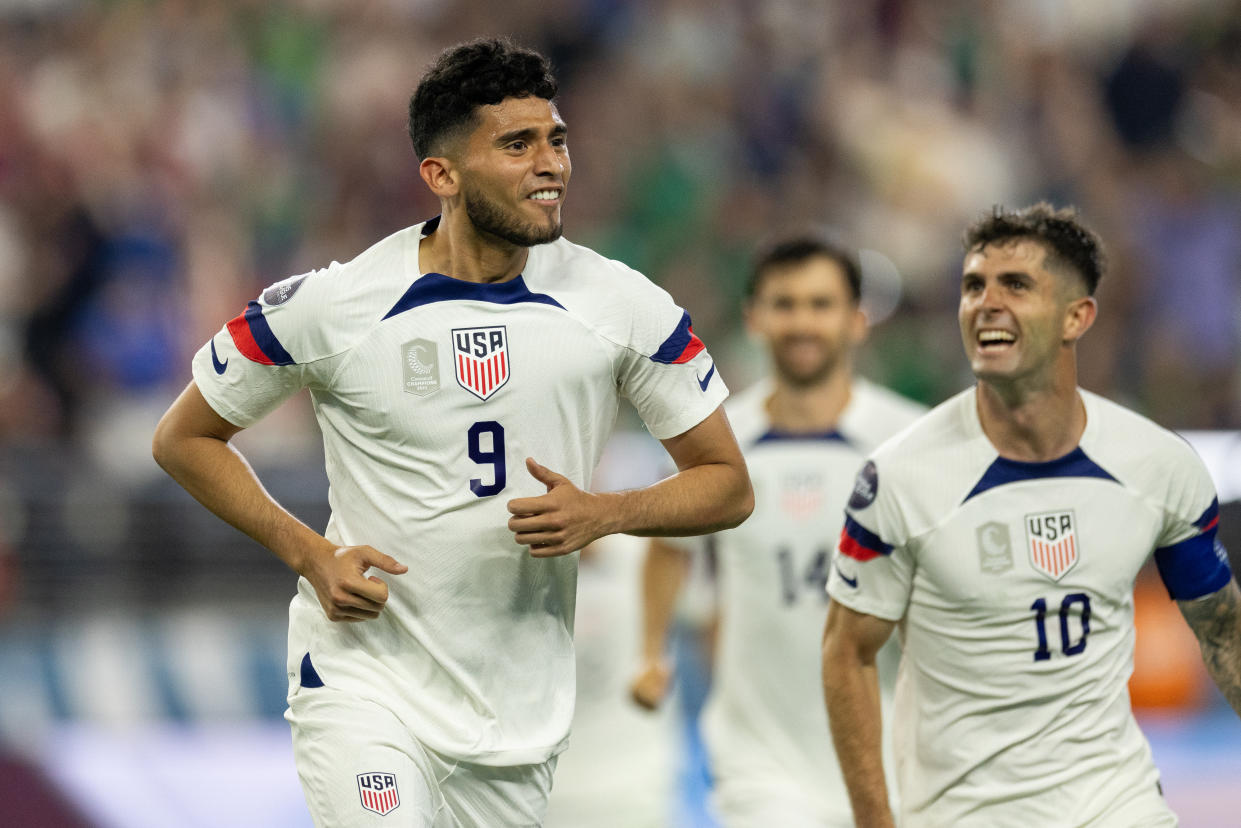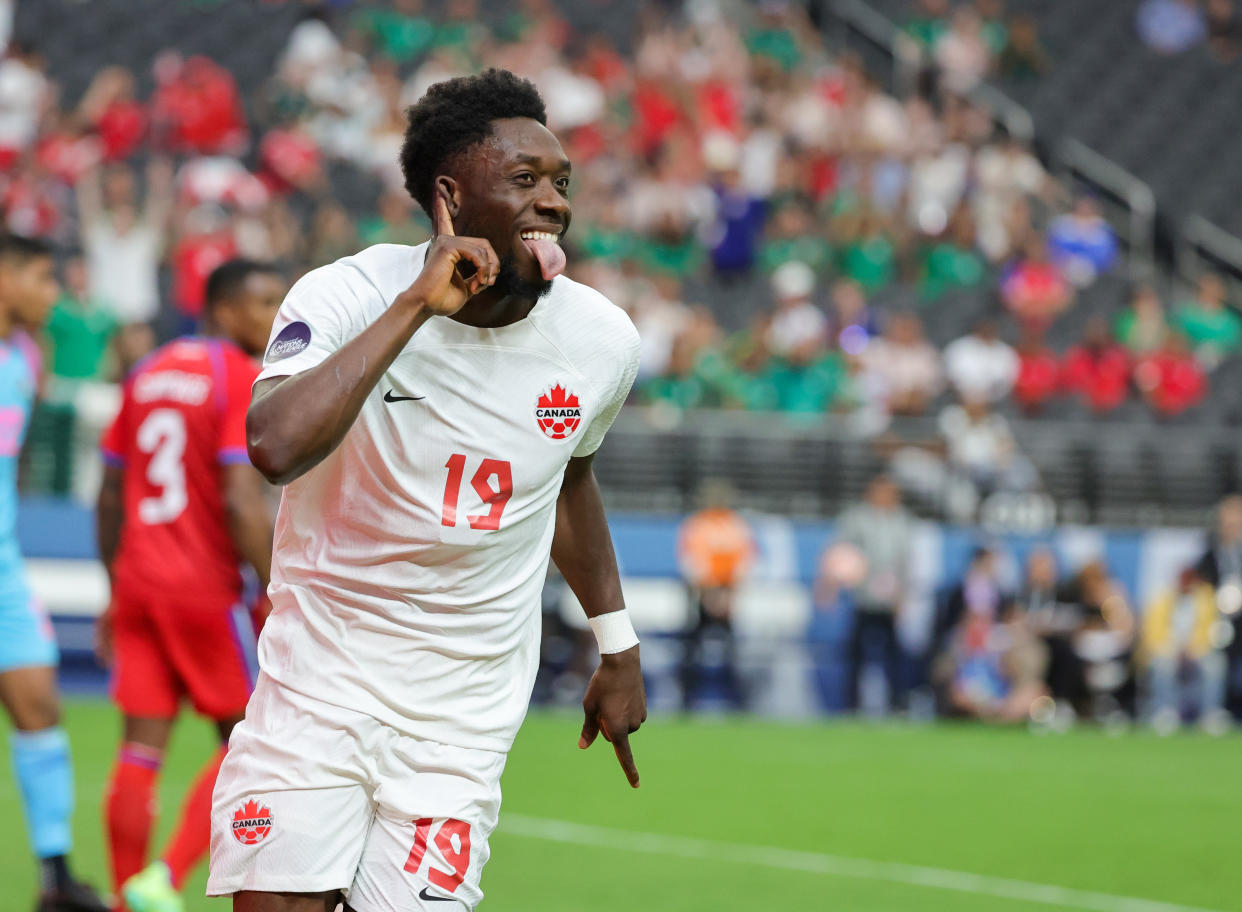U.S.-Mexico is still the main rivalry, but U.S. and Canada are now ‘the two premier teams’ in CONCACAF

PARADISE, Nev. — The Canadian players were waltzing through the bowels of Allegiant Stadium when the U.S.-Mexico madness began. They had just wrapped up a businesslike win over Panama. They had showered, and unwound. As they headed toward their team bus, some tracked the CONCACAF Nations League’s second semifinal. They watched the second half on TV from their hotel. They saw the melees, and the vicious tackles, and the flying beer, and much more, and two days later, midfielder Ismaël Koné’s eyes got wide just remembering it.
“Crazy stuff that happened there,” Koné said Saturday.
“It was a bit much,” midfielder Atiba Hutchinson said with a laugh.
They all agreed that Sunday’s final, U.S. versus Canada (9 p.m. ET, Paramount+/Univision), will be a bit more civil, less chaotic. “We're not expecting it to turn into an all-out, four-red-card kind of match,” defender Alistair Johnston said. They know that U.S.-Mexico, as the region’s premier rivalry, will always be its most explosive; and that U.S.-Canada might never equal its fireworks.
But it can become a storied rivalry of its own, because, as Johnston said: “In our opinion, we're the two premier teams [in the region] right now.”
Johnston is a bit biased, of course, but he’s also correct. By almost every conceivable method of measurement, Canada and the U.S. are CONCACAF’s top two men’s teams. Neither lost to Mexico in World Cup qualifying. As El Tri have nosedived into crisis, the two North American neighbors are rising. They are both cohesive. They both have quality. Per Transfermarkt, they have the region’s two most valuable squads, and far more high-end talent.
“Mexico is, obviously, a great team,” Johnston said graciously (and incorrectly). “But the U.S. kinda showed they're a class above right now. And now it's our turn to show that we belong at this level as well.”
They are still, in many ways, viewed as underdogs. As a soccer nation, they are at a much earlier stage of growth. Their professional league is still nascent. Their federation is a bungling mess. They have fewer resources. Their player pool has less depth. The Americans are -190 favorites at BetMGM in Sunday’s showdown, and “are now the leaders in CONCACAF,” Canada head coach John Herdman admitted. The Canadians, who until 2021 hadn’t even reached the final round of World Cup qualification this century, are still catching up.
But they no longer feel like minnows, nor act like minnows. They walk and talk with confidence, “confidence that we can play with anyone in this region,” Johnson said.
“For me, it's perfectly fine sticking with the underdog story,” he clarified. But, “do we truly feel like underdogs? I don't think so.”

They have Alphonso Davies and Jonathan David, the two brightest stars in the region. They beat and drew the U.S. in qualifiers last cycle, and finished atop the CONCACAF table. They face-planted in Qatar, stumbling on smugness and rotten luck, but their mere presence at the World Cup, and their experiences while there, established a floor and raised their 2026 ceiling.
“I think we've earned the respect of everyone in this region, that they don't view us potentially how they previously viewed us,” Johnston, who plays for Celtic in Scotland, said.
“If you look at us over the last four years,” Hutchison said, “I think we've already put messages out there that we're here now, and we're here to stay.”
And if they are, this rivalry will be here to stay, too.
In all likelihood, it’ll never be as fractious, as disorderly, as U.S.-Mexico. There are several reasons for that. “I think we're more calm-headed teams,” Koné noted. They also have less media pressure and less passionate fan bases. Half-empty stands don’t raise the temperature of games. In Sunday’s final, Herdman pointed out, “there won't be 70,000 Canadians in the stadium sort of winding it up.”
“But,” he added, “I think you can expect it will be heated.”
“We're not planning on turning it into MMA,” Johnston said. “But at the same time, as we all know, it's CONCACAF. Things get CONCACAFy. . And we're fine with that. There's gonna be some dark arts.”
And that, precisely, with trophies up for grabs, is how rivalries blossom. Derbies, or clásicos, as they’re known in soccer, don’t materialize out of nothing; they can’t be manufactured. They feed on moments. They grow from history. And Sunday is a golden opportunity to write some.
